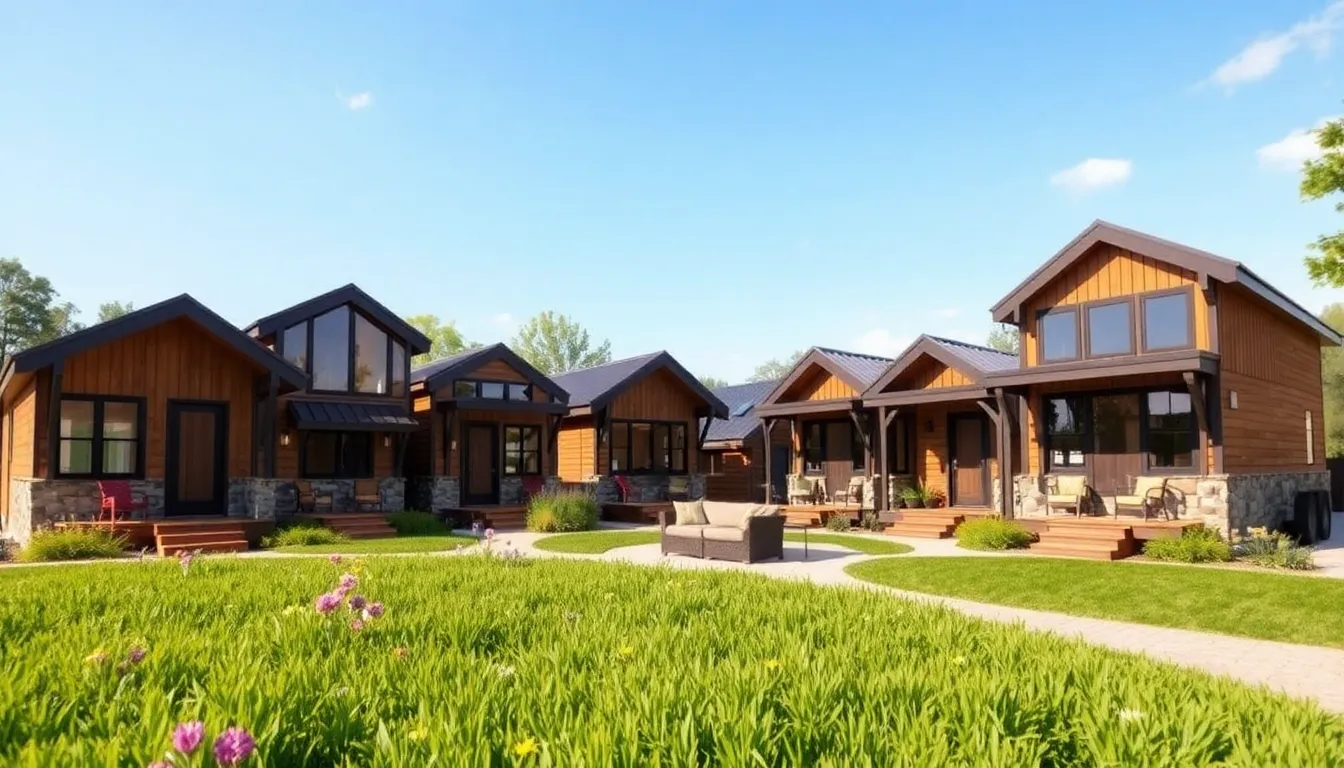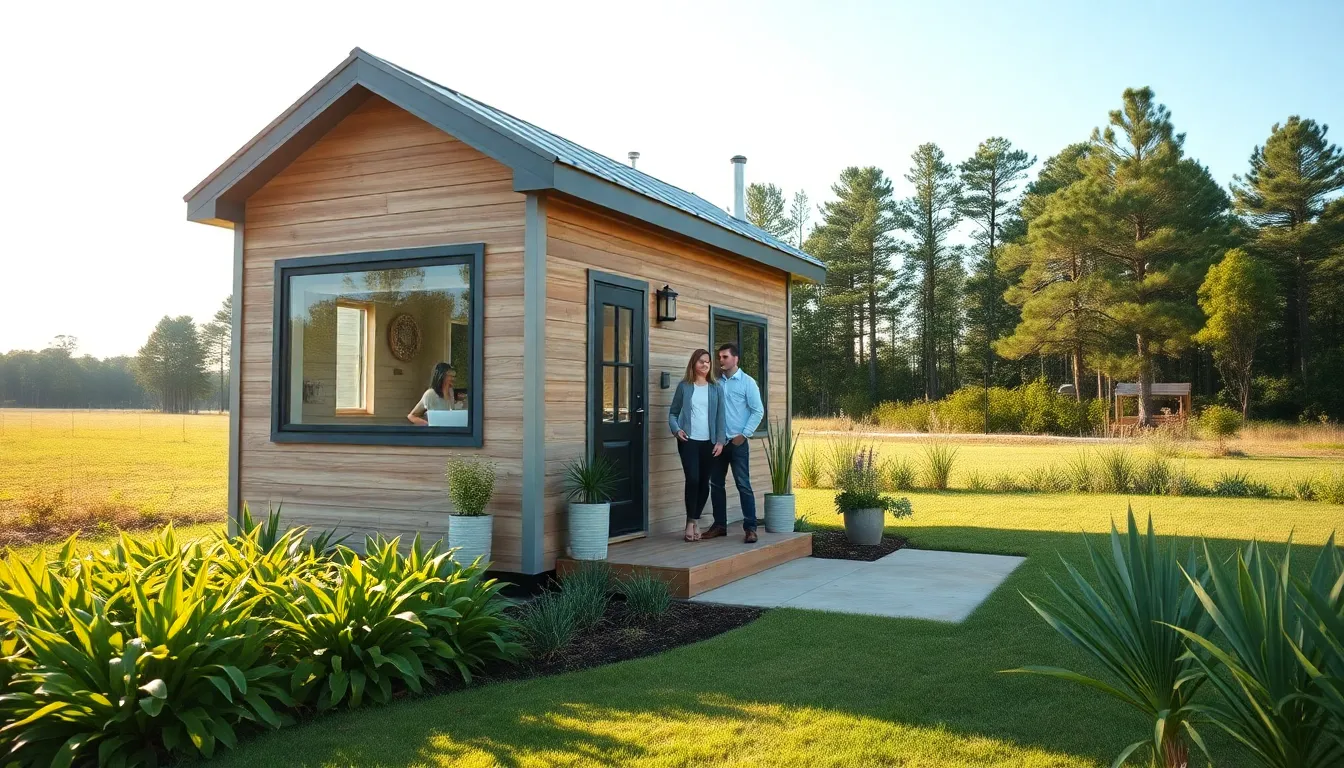As the golden years approach, many seniors face a dilemma: how to maintain independence while enjoying companionship. Enter shared senior housing, a revolutionary concept that’s changing the game. Imagine living in a cozy home with friends who share your interests, all while keeping those pesky bills at bay. It’s like a retirement party that never ends!
Table of Contents
ToggleOverview of Shared Senior Housing
Shared senior housing provides a practical solution for seniors seeking companionship while maintaining independence. This arrangement allows multiple seniors to share a living space, reducing isolation. Living together fosters community, encouraging social interaction among residents.
Costs decrease significantly with shared housing. Seniors can split rent and utility bills, making it an affordable option compared to traditional living arrangements. Many shared senior housing arrangements offer furnished common areas, shared kitchens, and individual bedrooms, blending privacy with communal benefits.
Furthermore, shared senior housing promotes a support network. Residents often help each other with daily tasks, healthcare appointments, and companionship, creating a nurturing environment. Many seniors express a desire for social engagement, and shared living facilitates this connection.
Numerous models exist within the shared housing concept. Some focus on co-housing, where individuals manage their own space but collaborate on meals and activities. Others provide more structured environments, resembling assisted living facilities while preserving the benefits of shared living.
Preferred amenities in these settings often include gardens, activity rooms, and spaces for social gatherings. Such features attract seniors looking for an enriching lifestyle. Additionally, these communities provide opportunities for skill-sharing among residents, often resulting in strong bonds and friendships.
Shared senior housing represents an innovative approach to senior living. It balances affordability, companionship, and supportive networking, making it an appealing option for many older adults.
Benefits of Shared Senior Housing
Shared senior housing offers numerous advantages, enhancing the quality of life for older adults. This model emphasizes affordability, social connections, and supportive living.
Cost-Effectiveness
Housing costs significantly decrease when seniors share expenses. Rent and utility bills become manageable since they split these financial obligations. Many seniors find this arrangement more accessible compared to traditional living options. Budget-conscious seniors benefit from reduced living expenses while enjoying comfortable living conditions. Shared spaces often include furnished common areas, creating value without sacrificing comfort. Residents can also save on groceries with communal meals.
Social Interaction
Isolation declines as seniors engage with one another in a shared living environment. Constant interaction fosters friendships with similar-minded individuals. Opportunities for group activities arise naturally, promoting social engagement daily. Living with others helps alleviate loneliness and enhances emotional well-being. Many shared housing setups encourage participation in community events, further strengthening bonds among residents. Shared interests flourish, allowing seniors to support each other in personal pursuits and hobbies.
Supportive Environment
A nurturing atmosphere develops in shared senior housing, where residents support each other’s daily lives. Assistance with healthcare appointments or daily tasks often occurs organically within the community. Seniors find comfort in knowing they have someone nearby for companionship. Many houses offer features like gardens and activity spaces, making it easy to engage with neighbors. The collaborative spirit in shared senior living leads to stronger, more resilient support networks. Through these connections, residents experience an enriching lifestyle that prioritizes mutual care.
Types of Shared Senior Housing
Various models exist in shared senior housing, accommodating diverse needs and preferences among older adults. Each type emphasizes collaboration and community living.
Co-Housing Models
Co-housing models consist of private homes clustered around shared spaces. Residents maintain their autonomy while enjoying communal amenities, such as kitchens, gardens, and recreational areas. Often, these communities foster strong relationships among members, leading to organized social gatherings and shared responsibilities. Intentional design encourages interaction, which helps reduce feelings of isolation. Cohousing provides a balance between privacy and community, appealing to seniors looking for both independence and connection.
Assisted Living Arrangements
Assisted living arrangements focus on providing additional support for seniors who require help with daily activities. Residents typically enjoy private or semi-private rooms while benefiting from shared common areas. These facilities often provide 24-hour staff assistance, ensuring safety and addressing healthcare needs. While maintaining a community atmosphere, residents can easily access services, including meal preparation and transportation. Assisted living promotes a supportive environment while still allowing for social interaction and companionship among peers.
Challenges of Shared Senior Housing
Shared senior housing offers numerous benefits, but challenges also arise that residents must navigate.
Compatibility Issues
Compatibility among residents plays a crucial role in shared living environments. Disagreements can occur due to differing lifestyles, habits, and personalities. For instance, one resident may prefer a quiet setting while another enjoys social gatherings. Tensions might escalate when individuals do not align with each other’s schedules or preferences. Effective communication becomes essential, as it helps address conflicts early on. Regular meetings can foster understanding and cooperation. Ensuring compatibility before moving in can significantly reduce potential issues. By carefully selecting housemates, seniors can enjoy a harmonious living arrangement.
Managing Shared Responsibilities
Managing shared responsibilities poses another challenge in shared senior housing. Duties like cleaning, cooking, and maintenance require clear agreements to avoid misunderstandings. Some residents might not fulfill their tasks, leading to resentment among others. Establishing a chore schedule can promote accountability and fairness. Open discussions about expectations make it easier to balance workloads. Flexibility is also important; some seniors might require assistance with certain tasks. By working together, residents can create a supportive environment that encourages collaboration. Ultimately, careful management of shared responsibilities leads to a more enjoyable living experience.
Conclusion
Shared senior housing emerges as a valuable option for seniors seeking a balance between independence and companionship. By fostering a supportive community, it helps combat loneliness while reducing living expenses. The diverse models available cater to various needs, ensuring that seniors can find the right fit for their lifestyles.
While challenges exist in managing shared living arrangements, the benefits often outweigh the drawbacks. With effective communication and clear agreements, residents can create a harmonious environment that enhances their quality of life. As more seniors explore this innovative approach to living, shared senior housing is likely to gain traction as a preferred choice for those looking to thrive in their golden years.







